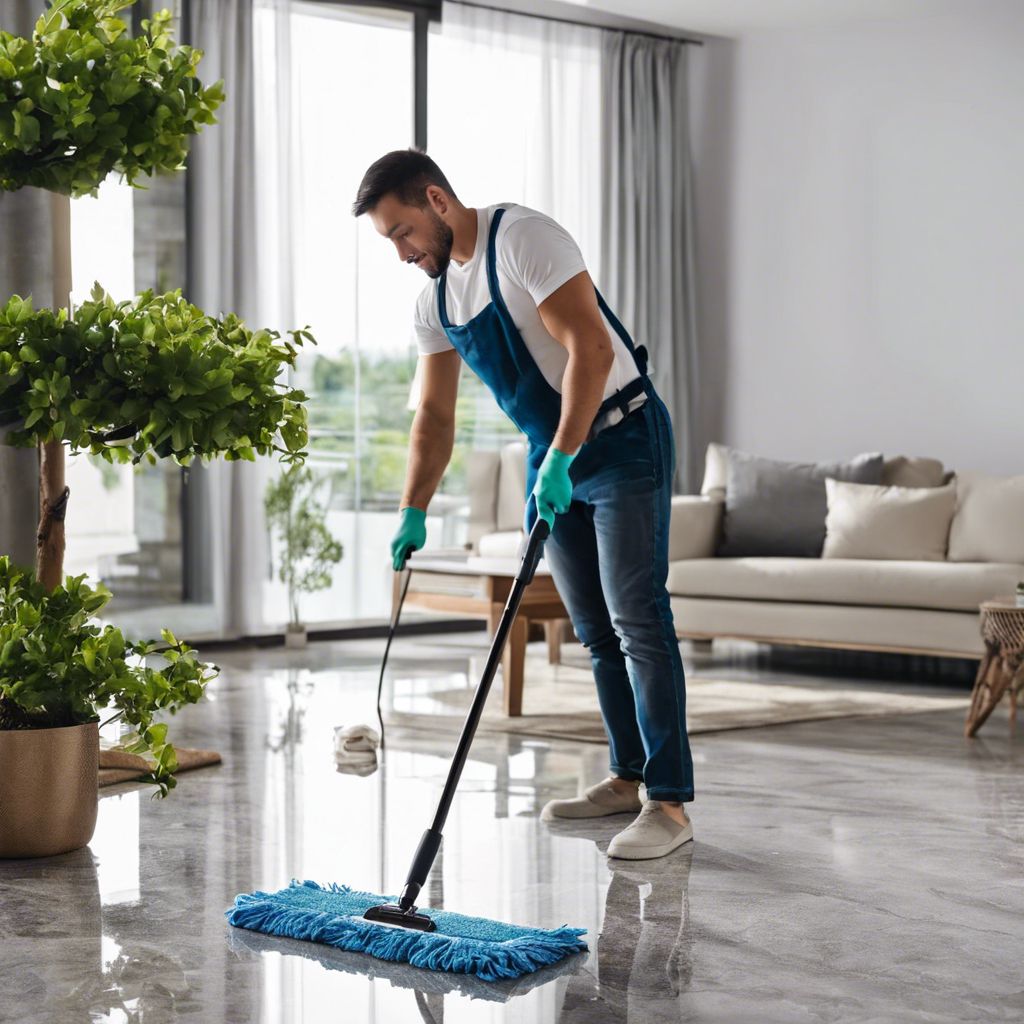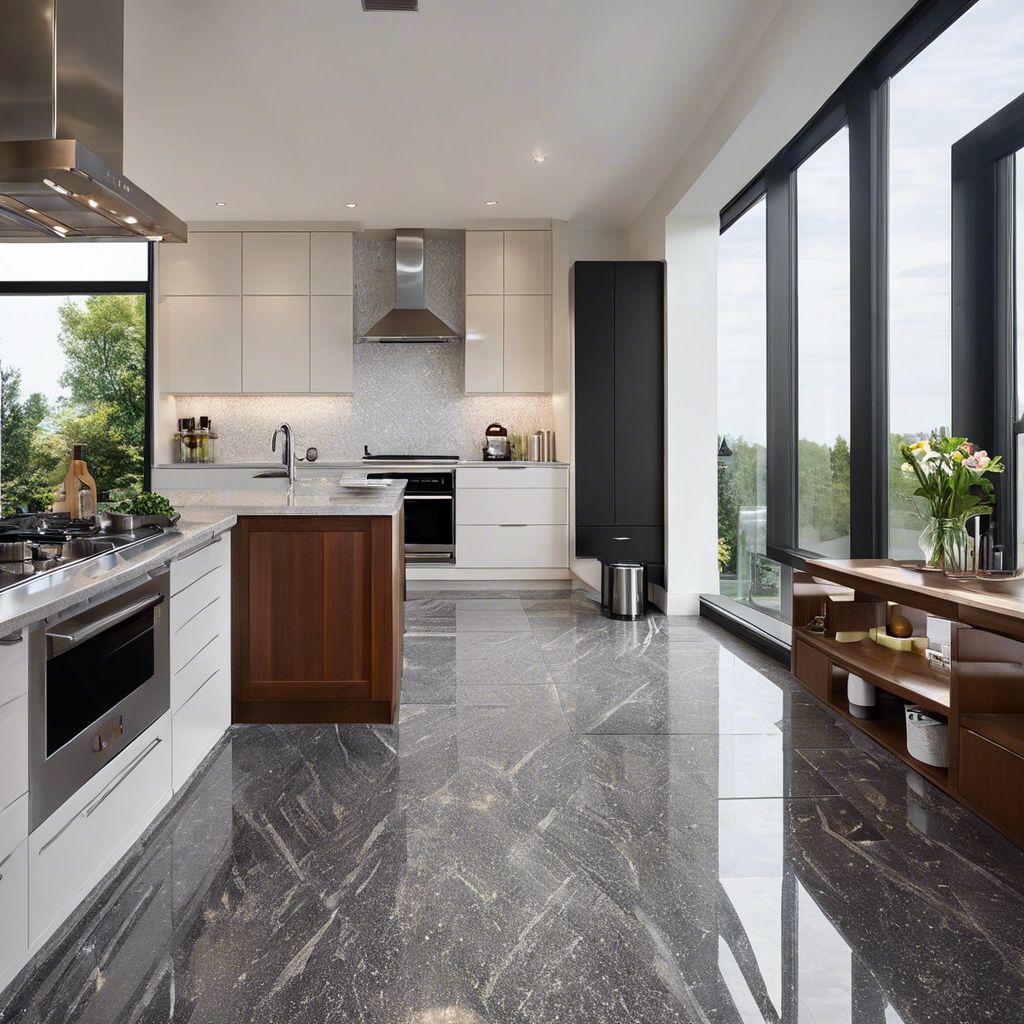
Key Takeaways
- Identify when your granite tiles need refinishing to maintain their luster and durability.
- Gather all necessary materials before starting the refinishing process to ensure efficiency and safety.
- Clean the granite flooring thoroughly as the first step in the refinishing process.
- Use the right tools and techniques for grinding and honing to achieve a smooth surface.
- Seal your granite tiles properly to protect them and extend their life after refinishing.
Reviving Your Granite Flooring: A DIY Endeavor
There’s something truly special about taking matters into your own hands, especially when it comes to reviving the charm of your home. Granite flooring, with its natural elegance, can become the centerpiece of a room. But over time, it may lose some of its sparkle. Not to worry, though. With a bit of elbow grease and the right approach, you can bring back that showroom shine. Let’s roll up our sleeves and dive into the world of DIY granite tile flooring refinishing.
Signs It’s Time for a Refinish
First things first, how do you know it’s time to refinish your granite tiles? Look out for dullness, scratches, or uneven surfaces that no amount of cleaning can fix. If your tiles once gleamed under the sunlight but now seem to absorb light rather than reflect it, it’s a telltale sign they need some love. Also, if you notice water no longer beads on the surface, it’s time to refinish and reseal.
Materials You’ll Need to Start
Before you start, make sure you have everything you need. You wouldn’t want to be halfway through the job and realize you’re missing a key component. Here’s a checklist:
- Protective gear: safety glasses, gloves, and a dust mask
- Cleaning supplies: broom, mop, bucket, and a pH-neutral cleaner
- Repair materials: epoxy resin or a granite repair kit for any chips or cracks
- Refinishing tools: a sander or grinder, diamond pads, and a buffing machine
- Polishing and sealing supplies: granite polish and a high-quality sealant
Now that you’ve got your toolkit ready, it’s time to breathe new life into your granite floors.

Steps in Refinishing Granite Flooring
Ready to give your granite floor tiles a makeover? With a bit of know-how and elbow grease, you can turn tired tiles into shining beauties. Let’s dive into the steps for refinishing your granite floors.
Step 1: Preparation: Setting the Stage for Success
Like any good story, the success of your refinishing project starts with setting the stage. Remove all furniture and rugs from the area. Protect baseboards, cabinets, and lower walls with plastic sheeting to prevent any damage during the process. Make sure the room is well-ventilated to keep the dust at bay.
Step 2: Thorough Cleaning
The foundation of refinishing is a clean surface. Sweep away any loose dirt and debris. Follow up with a mop using a pH-neutral cleaner that’s safe for granite. This will remove any grime and previous sealant, providing a blank canvas for your refinishing masterpiece. Let the floor dry completely; moisture can interfere with the refinishing process.
Remember, patience is key here. Rushing through the cleaning stage can result in a less-than-stellar finish later on.
Step 3: Assessing and Repairing
Once the floor is clean and dry, inspect it closely for any damage. Small chips and cracks can be filled with a color-matched epoxy resin. If you’re not sure about the color, it’s worth taking the time to get it right. A mismatched repair can be more noticeable than the original damage.
Apply the epoxy carefully, following the manufacturer’s instructions, and allow it to cure fully before moving on to the next step. This attention to detail will ensure a seamless finish.
Step 4: Grinding
Grinding is where the real transformation begins. It’s a bit like sanding wood; you’re smoothing out the rough edges and preparing for a polished finish. Attach a coarse diamond grinding pad to your sander or grinder. This is the muscle behind removing deep scratches and evening out the floor. Move the machine in a steady, controlled manner to avoid creating dips or gouges in the stone.
Work in small sections and keep a steady hand. Grinding requires patience and a bit of practice to perfect. You’re not just aiming for smoothness; you’re setting up the foundation for a high-gloss finish. So take your time and make sure the floor is uniformly ground before moving on to the next step.
It’s important to regularly check the progress of your grinding. Run your hand over the surface to feel for any remaining irregularities. If the floor feels smooth to the touch and looks evenly matte, you’re ready to move on.
Step 5: Honing: The Refinement Process
Honing is what gives granite that satin-smooth finish. After grinding, switch to a finer grit diamond pad. This step is all about finesse, refining the surface to a smooth touch and preparing it for the final polish.
Choosing Diamond Pad Grits for Honing
When selecting diamond pads, you’ll start with a lower grit and work your way up. A typical progression might be 200, 400, and 800 grit. The lower the number, the coarser the pad. As you ascend in numbers, the pads get finer, which refines the surface of your granite more and more.
The right grit sequence depends on the condition of your floors and the level of gloss you’re aiming for. If your floor was in rough shape to start with, you might need to begin with a 100 or 200 grit. If it was in better condition, you might start with 400.
Detailed Honing Instructions
Start with the lower grit pad and hone the floor using the same controlled back and forth motion as grinding. After completing the entire floor with one grit, move up to the next. This gradual progression is critical for achieving a smooth finish.
With each pass, you should notice the granite becoming smoother. After the final honing pass, your floor should have a uniform, matte finish without any visible scratches. Now, it’s ready for polishing, where the true beauty of granite will start to shine through.
Step 6: Polishing: Restoring the Shine
Polishing is where the magic happens. It’s the step that brings out the rich color and shine of your granite. Attach a polishing pad to your machine, and apply a granite polishing compound. This compound fills any microscopic pits in the surface and enhances the stone’s natural color.
Applying the Correct Buffing Solution
Use a buffing solution specifically designed for granite. It’s important to follow the manufacturer’s instructions closely. Apply the solution to the floor and distribute it evenly with the machine. The polish will start to work its magic, giving your granite that sought-after gleam.
Proper Buffing Techniques for Maximized Shine
Buffing is a circular dance, moving the machine in a circular motion to work in the polish. Overlap your passes to ensure full coverage. You’ll see the stone start to shine as you buff. Don’t rush this process; let the polish do its work.
Once you’ve polished the entire floor, give it a final buff without additional polish to bring up the maximum shine. Your granite should now reflect light beautifully and have a deep, rich color.
Step 7: The Final Touch: Sealing Your Granite Floors
After polishing, it’s important to seal your granite floors. Sealing protects the stone from stains and prolongs the life of your finish. Choose a high-quality sealant that’s appropriate for granite. Make sure the floor is clean and dry before you start.
Understanding Sealant Types
There are different types of sealants, including topical, penetrating, and impregnating. For granite, an impregnating sealant is usually best because it penetrates the stone and offers protection without affecting the color or finish.
Applying Sealant for Long-Term Protection
Apply the sealant according to the manufacturer’s directions. Spread it evenly, allow it to penetrate the stone, and then wipe away any excess. It’s important to let the sealant cure fully before you put furniture back or walk on the floor. This usually takes about 24 hours.

Maintenance: Preserving Your Refinished Floors
Now that your granite floors are looking fabulous, let’s keep them that way. Regular maintenance is simpler than you might think. Sweep or dust mop daily to remove dirt that can scratch the surface. Clean spills immediately to prevent staining, and use a pH-neutral cleaner for regular mopping.
Routine Cleaning Tips
Every few months, give your floors a thorough cleaning and consider applying a fresh coat of polish. This will maintain the seal and keep your floors looking their best. With proper care, your granite floors will stay stunning for years to come.
Addressing Spills and Stains
Don’t let spills sit for too long on your granite floors. The longer they linger, the higher the chance they’ll seep into the stone, potentially causing a stain that’s tougher to tackle. Blot, don’t rub, to lift the spill and then clean the area with a mild detergent or a stone cleaner.
And there you have it, a step-by-step guide to refinishing your granite tile flooring. With these tips and a little bit of effort, you can restore the beauty of your granite and make it a centerpiece in your home once again. Happy refinishing!

Frequently Asked Questions
How often should granite tile flooring be refinished?
Granite flooring should be refinished whenever you notice the shine has dulled or if there are scratches and etches that can’t be removed through regular cleaning. Typically, this could be every 5-15 years, depending on the level of foot traffic and how well the floors are maintained.
Can all granite tile stains be removed with DIY methods?
Most stains on granite tiles can be removed if they’re addressed quickly. However, some stains, like oil-based ones, may require a poultice to draw out the stain from the stone. Stubborn or old stains may need professional attention.
Is there a risk of damaging granite tiles during the DIY refinishing?
Yes, there’s a risk if the process isn’t done correctly. Using the wrong equipment or applying too much pressure can damage the tiles. It’s important to follow the steps carefully and use the right tools for the job.
Grinding and polishing granite requires a gentle touch and patience. If you’re unsure about any step, it’s best to consult with a professional before proceeding.
What safety precautions should be taken when refinishing granite flooring?
Always wear protective gear such as safety glasses, gloves, and a dust mask. Ensure the room is well-ventilated to minimize dust inhalation. Keep children and pets away from the work area, and follow all instructions on the tools and products you’re using.
It’s also important to lift, not drag, furniture when moving it back into place to avoid scratching your newly refinished floors.
How long does it take for the refinishing process to be complete?
The time it takes to refinish granite flooring can vary. It depends on the size of the area, the condition of the floors, and your experience with the process. On average, it can take a weekend to refinish a standard-sized kitchen floor, not including the curing time for the sealant.
Remember, the key to a successful refinishing project is not to rush. Take your time with each step, and allow for proper drying and curing times. This will ensure the best results and a beautiful, long-lasting finish.





Leave a Reply